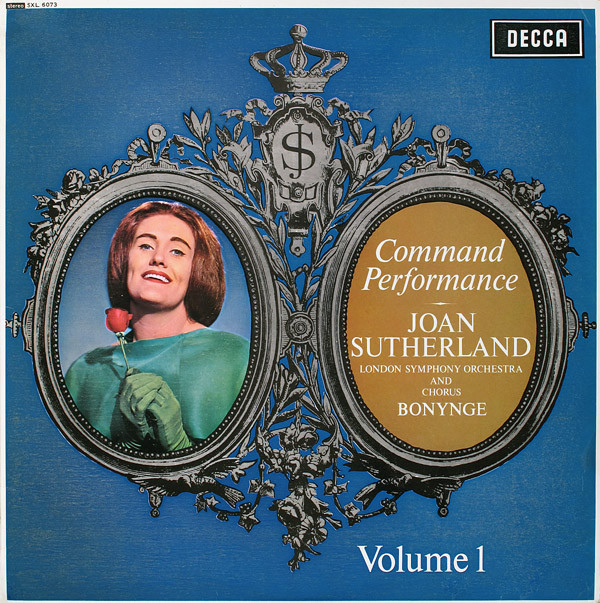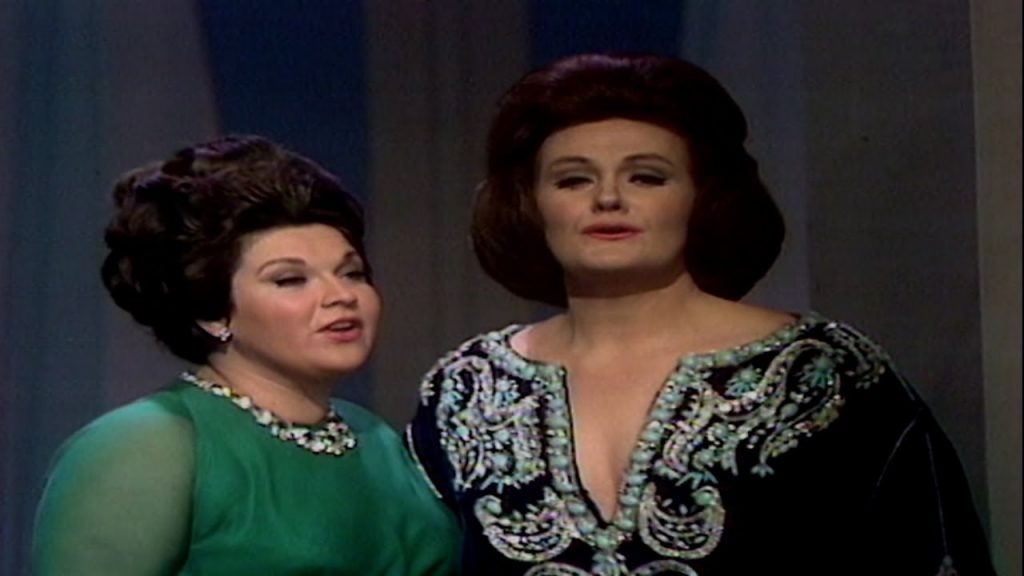Podcast: Play in new window | Download | Embed
For those of you who believe Opera is all sturm und drang, viking helmets and heavy volume, Dame Joan Sutherland helped bring back a music form called bel canto, or beautiful singing, and embellished her version of it with a florid expressiveness called coloratura. #opera #belcanto #coloratura #sutherland
Opera can be daunting to the uninitiated, much of this due to the sheer number of years the art form has been around. It arrived during the Baroque period, which was over 400 years ago, a period which was preceded by the Medieval and Renaissance periods.

Following the Baroque period came the Classical period, which in this definition, refined elements of the Baroque and most importantly, where individual songs, or sonatas, came to the fore. The most recognizable names from this period are Beethoven and Mozart. By the time of the Romantic period, which followed, large, heavy, loud and technically difficult works, exemplified by Wagner, became popular.
The Romantic period and Wagnerian largess held an amazing amount of sway over the Opera world for over a century, and it was almost as if the lush music of the Classical period would be gone forever. However, in the mid-20th Century, Classical period music made an amazing comeback, and theatre companies once again started to perform works in the style. Even an Oscar-winning film about the life of Mozart, Amadeus, in 1984, further emphasized this revival.

But this success owes a great deal to singers such as Marilyn Horne, Montserrat Caballé, Beverly Sills, Luciano Pavarotti and Joan Sutherland, singers who used coloratura, which is an expressive vocal delivery that unlike Romantic pieces, is more about feeling and phrasing than attempting to enunciate every single note, and is generally brighter in tone. Coloratura also allows the singer a a more personal interpretation of a composer’s work.
Joan Sutherland was considered one of the 20th Century’s greatest singers of Opera and Classical period works, even though some of her critics thought her diction wasn’t perfect. Hailing from Sydney, she honed her craft for years, originally wanting to be a singer of Wagnerian works. Her lifelong husband, collaborator, pianist and conductor Richard Bonynge, persuaded her to to attempt something different.

Sutherland worked tirelessly for decades to bring back what many called “beautiful music”, and in addition to being a part of many staged productions, she also recorded studio albums extensively as well, which helped cement her place a leading figure in Opera. She also just happened to be the first Australian ever to win a U.S. Grammy Award in 1961 for her double LP The Art of the Prima Donna.
Sutherland was made a Dame Commander of the Order of the British Empire by Queen Elizabeth II in 1978 in recognition of her work in the arts.

Though her voice would start to show wear by the mid-1960’s, partially due to sinus surgery, she kept touring and recording until 1990, whereafter she used her time to sit on judging panels for new talent. She died in 2010, and was given a State Funeral.
First Part
- Verdi: La Traviata – Act 3: Signora… Che T’Accadde… Parigi, O Cara, 1976, Operatic Duets (aka Love Duets) (with Luciano Pavarotti), conducted by Richard Bonynge: National Philharmonic Orchestra, London Opera Chorus
- Donizetti: Il Castello Di Kenilworth – Act 3: Par Che Mi Dica Ancora…Fuggi L’Immagine, 1985, Bel Canto Arias, conducted by Richard Bonynge: Welsh National Opera Orchestra
- Mozart: Exsultate, Jubilate, K 165 – 4. Alleluia, 1979, Sutherland Sings Mozart, conducted by Richard Bonynge: National Philharmonic Orchestra
Second Part
- Gounod: Roméo Et Juliette – Ah! Je Veux Vivre, 1960, The Art of the Prima Donna, conducted by Franco Molinari-Pradelli: Orchestra Of The Royal Opera House
- Bellini: La Straniera – Un Ritratto?…Veggiam, 1963, The Age of Bel Canto (with Richard Conrad), conducted by Richard Bonynge: London Symphony Orchestra
- Lehár: Die Lustige Witwe – Act 2: Vilja-Lied, 1966, Love Live Forever, conducted by Richard Bonynge: New Philharmonia Orchestra, Ambrosian Light Opera Chorus
Finale
- Glière: Concerto For Coloratura & Orchestra, Op. 82 – 1. Andante and 2. Allegro, 1969, Russian Rarities (aka Russian Jewels), conducted by Richard Bonynge: London Symphony Orchestra
Love to you all.
Ben “Daddy Ben Bear” Brown Jr.
Host, Show Producer, Webmaster, Audio Engineer, Researcher, Videographer and Writer
Instagram: brownjr.ben
Twitter: @BenBrownJunior
LinkedIn: benbrownjunior
Design Site: aospdx.com
“Copyright Disclaimer Under Section 107 of the Copyright Act 1976, allowance is made for ‘fair use’ for purposes such as criticism, comment, news reporting, teaching, scholarship, and research. Fair use is a use permitted by copyright statute that might otherwise be infringing. Non-profit, educational or personal use tips the balance in favor of fair use.”
